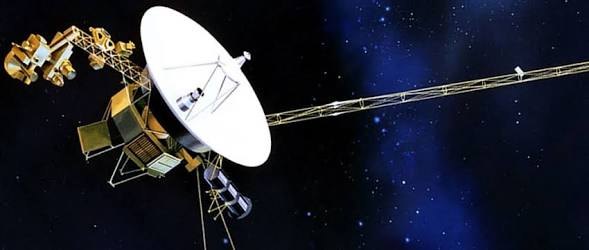Having recently completed 40 years of the space voyage, the twin-Voyager space probes are a testament of what creativity, passion and scientific ingenuity can achieve. For space probes that were launched at a time when the technology we had was circumscribed, they have continued to expand their horizons and have perpetrated path-breaking quests. Here’s All you need to know about them.
What was the mission of the space probes?
Launched on August 20, 1977, and September 5 of the same year, Voyager 2 and 1 were first conceived to study Mars, Venus and Mercury but their mission was extended to the outlier planets. Taking advantage of a unique alignment of the outlier planets which occurs only after 175 years, Voyager 2 was launched on a trajectory to study Jupiter, Saturn, Uranus and Neptune while Voyager 1 was designed for a study of Saturn’s moon, Titan. Their mission has been furthered thrice and both of them now have the task of exploring interstellar space.

What are their multitudinous achievements?
Close-up images taken by them recorded Jupiter’s complex cloud forms, winds, and storm systems and discovered Io, one of its moons, to harbour volcanic activity.
- Voyager 2 found Uranus to have substantial magnetic field surrounding it. In its flyby of Neptune, three complete rings and six moons whose existence we were unaware of until they were captured.
- Voyager 1 was the first spacecraft to detect lightning on a non-Earth planet (Jupiter).
- Both spacecraft were the first to find hints of an ocean beyond Earth (Europa, Jupiter’s moon).
- Voyager 1 was the first spacecraft to measure the maximum intensity of cosmic rays.
- Voyager 2 was the first spacecraft to measure solar wind termination shock.

Trivia:
Voyager 1 was the first ever human-made object to travel further than anything or anyone in history, entering interstellar space on August 25, 2012. Voyager 1 is currently nearly 13 billion miles from Earth and its twin, nearly 11 billion miles and they are predicted to complete one revolution within the Milky Way every 225 million years. Given their amazing endurance, they are expected to last longer than the Sun!

What makes these space probes truly special?
Communication with Extraterrestrial Intelligence (CETI) had become popular with Carl Sagan and Frank Drake having already experimented with it. For Voyagers, NASA made the Golden Records which would play out a story of our world to extraterrestrials. The records, aboard both spacecraft, contain sounds and images that convey the diversity of life and culture on Earth and were prepared for any intelligent extraterrestrial life form, or for future humans, who may find them. It took nearly a year for the Sagan-chaired committee to select their content with a conscious decision to convey only the positive aspects of our planet – depictions of war, crime, poverty and disease were avoided. Given their estimated lifespan, there will perhaps come the day when the only evidence that human civilization existed is borne within these time capsules.
No one could have imagined that the spacecraft launched 4 decades ago would continue to do pioneering work in space. They have epitomized the words “Per aspera ad astra” which mean “through hardships to the stars” and have truly gone to infinity and beyond.

